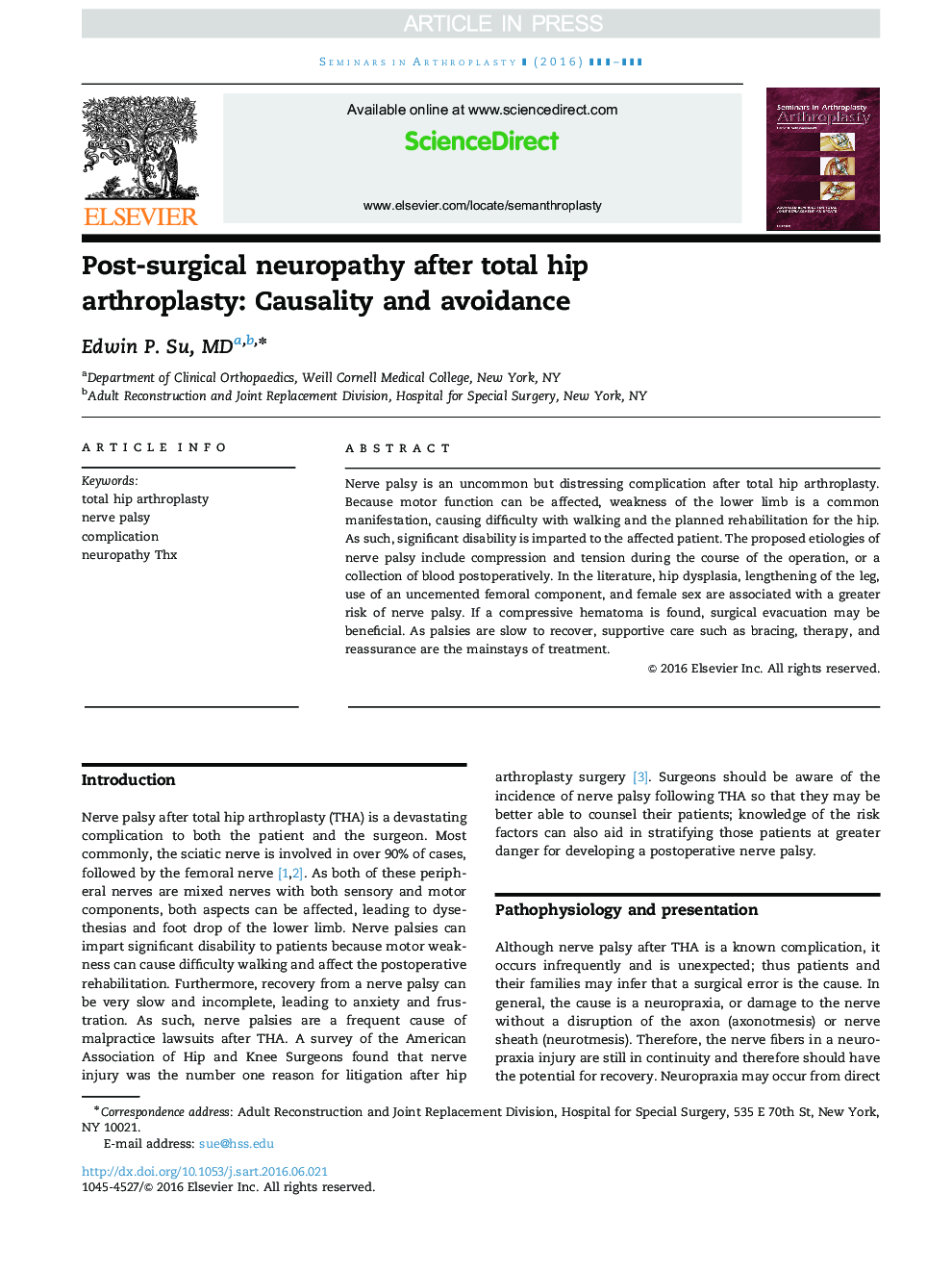| Article ID | Journal | Published Year | Pages | File Type |
|---|---|---|---|---|
| 5712387 | Seminars in Arthroplasty | 2016 | 4 Pages |
Abstract
Nerve palsy is an uncommon but distressing complication after total hip arthroplasty. Because motor function can be affected, weakness of the lower limb is a common manifestation, causing difficulty with walking and the planned rehabilitation for the hip. As such, significant disability is imparted to the affected patient. The proposed etiologies of nerve palsy include compression and tension during the course of the operation, or a collection of blood postoperatively. In the literature, hip dysplasia, lengthening of the leg, use of an uncemented femoral component, and female sex are associated with a greater risk of nerve palsy. If a compressive hematoma is found, surgical evacuation may be beneficial. As palsies are slow to recover, supportive care such as bracing, therapy, and reassurance are the mainstays of treatment.
Related Topics
Health Sciences
Medicine and Dentistry
Orthopedics, Sports Medicine and Rehabilitation
Authors
Edwin P. MD,
